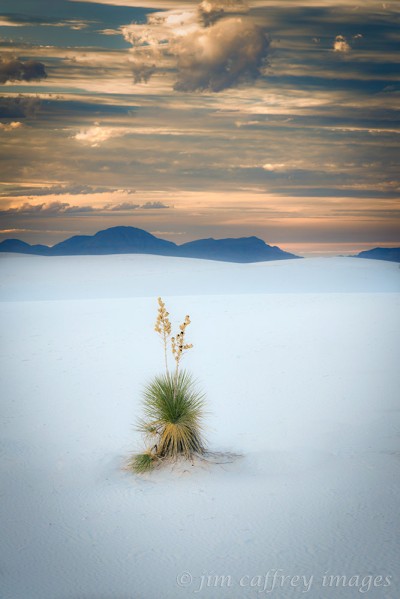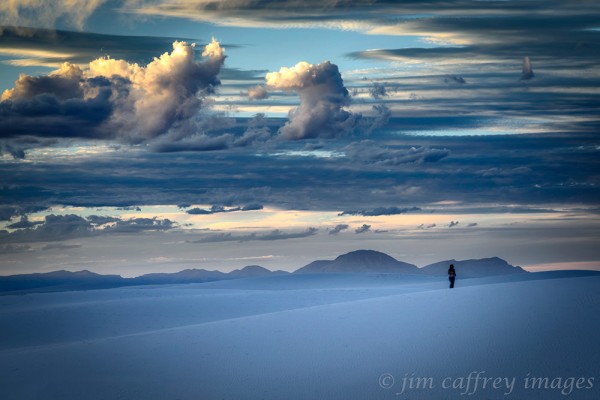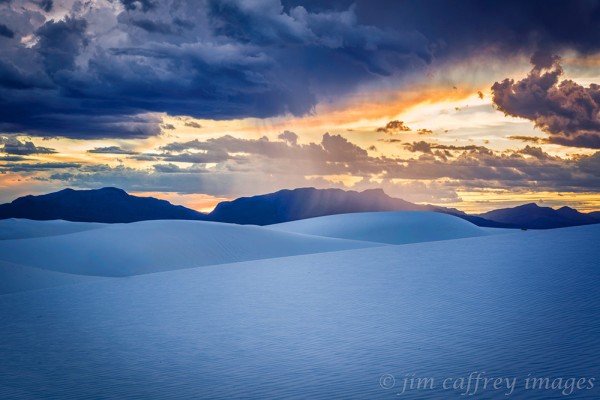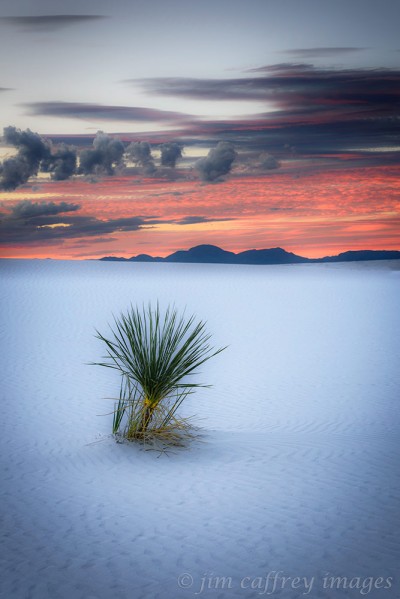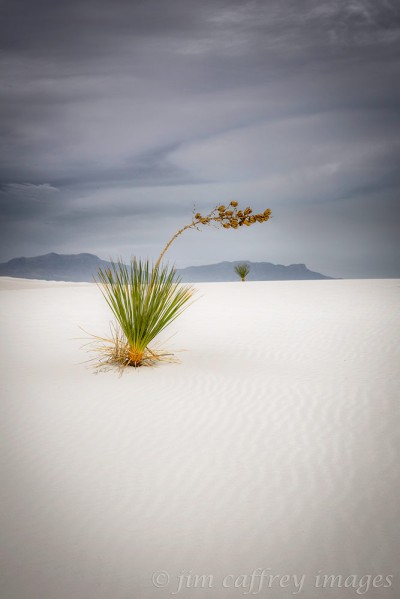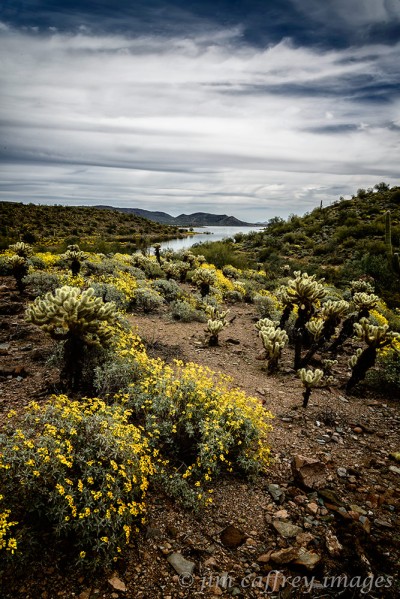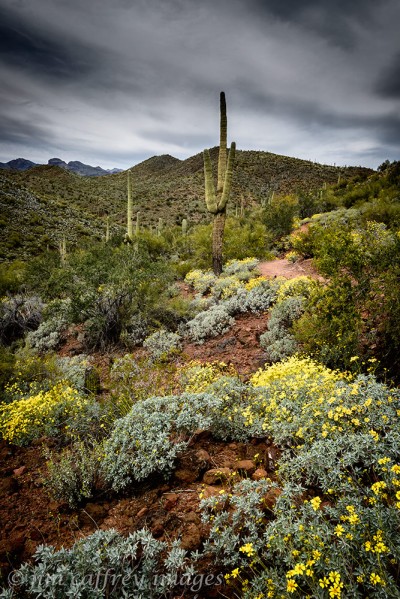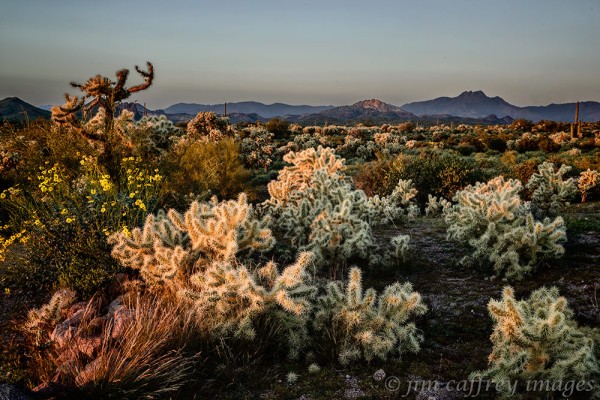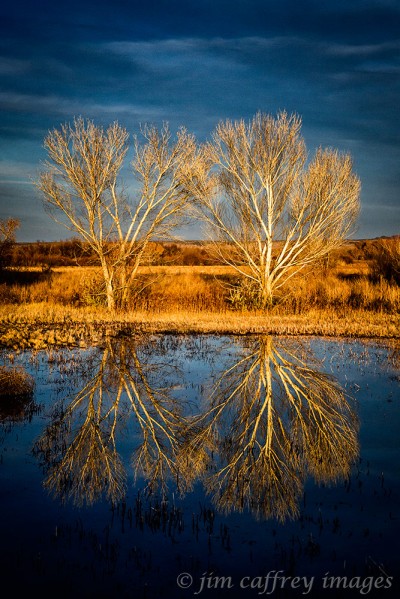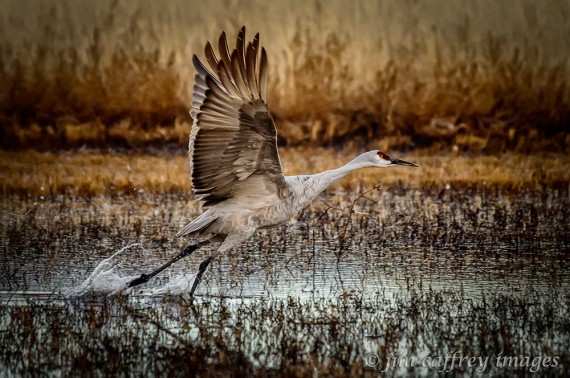Found Memories
I make it a habit to dig into my archives every so often just to see what might jump out at me. I am usualy pleasantly surprised and also find myself wondering why I didn’t see the possibilties of these images back then. The answer is, in most cases, a change in my perspective, or perhaps a maturation of my vision. In other cases, a simple change in long-standing habits, otherwise known as getting out of a rut.
 I was in Lake City, Colorado for the Lake City Wine and Music Festival. After the two day event, I took a ride up the road to Cinammon Pass which summits at nearly thirteen-thousand feet. Somewhere along the way I made this photograph of a stand of aspens. I guess I didn’t think it worthy of any further work when I edited my photos from that trip. I let my expectations get in the way sometimes and when I revisit images later, those biases no longer inhibit my judgement.
I was in Lake City, Colorado for the Lake City Wine and Music Festival. After the two day event, I took a ride up the road to Cinammon Pass which summits at nearly thirteen-thousand feet. Somewhere along the way I made this photograph of a stand of aspens. I guess I didn’t think it worthy of any further work when I edited my photos from that trip. I let my expectations get in the way sometimes and when I revisit images later, those biases no longer inhibit my judgement.
 The shading and texture of these deep erosion channels at the foot of Cainville Mesa caught my eye as we were driving past on the way to Factory Butte. I didn’t have a long telephoto lens with me, so I borrowed my friend Robin’s 70-300 and made this image. I didn’t think anything else about it and skipped right over it when I edited and processed my work from that trip. But looking at it now, I see the things that compelled me to make the photograph in the first place.
The shading and texture of these deep erosion channels at the foot of Cainville Mesa caught my eye as we were driving past on the way to Factory Butte. I didn’t have a long telephoto lens with me, so I borrowed my friend Robin’s 70-300 and made this image. I didn’t think anything else about it and skipped right over it when I edited and processed my work from that trip. But looking at it now, I see the things that compelled me to make the photograph in the first place.
 The coastal redwoods in northern California are an experience. It’s like being transported to another world, at least it seems that way to me, a desert rat who has lived for more than forty years in the desert southwest. This patch of rhododendrons was growing right along the road; the contrast between the delicate leaves and blossoms, and the looming immensity, and mystery of the trees disappearing into the mist in the background captured my imagination.
The coastal redwoods in northern California are an experience. It’s like being transported to another world, at least it seems that way to me, a desert rat who has lived for more than forty years in the desert southwest. This patch of rhododendrons was growing right along the road; the contrast between the delicate leaves and blossoms, and the looming immensity, and mystery of the trees disappearing into the mist in the background captured my imagination.
 I try to do any cropping to an image in camera, in other words, as I’m making the image. I very seldom crop photographs when I’m processing them. But this one was nagging at me. the left side of the image was not doing anything, it was an unwanted appendage. At the same time, I didn’t want to lose too much of the brooding clouds at the top. The answer was to change the aspect ratio from the normal 2:3 of 35mm or, in this case, full frame digital to 4:5. I like the result. The subject is the Yeibichei Rocks in Monument Valley.
I try to do any cropping to an image in camera, in other words, as I’m making the image. I very seldom crop photographs when I’m processing them. But this one was nagging at me. the left side of the image was not doing anything, it was an unwanted appendage. At the same time, I didn’t want to lose too much of the brooding clouds at the top. The answer was to change the aspect ratio from the normal 2:3 of 35mm or, in this case, full frame digital to 4:5. I like the result. The subject is the Yeibichei Rocks in Monument Valley.
 I often go to Tucson in February or March to photograph the blooming desert. In a good year, the wildflowers carpet large parts of the desert landscape. I remember very clearly the making of this image. This saguaro cactus was right across a dirt road from where my campsite was located. The sun had just set and, in the twilight’s glow, the clouds were a salmon color. This particular cactus was probably thirty feet tall and in order to isolate it, I had to be pretty close (once again, I found myself without a long telephoto lens. I have since started bringing at least my 80-200 Nikkor along on all my trips). The point is that the farther away you can get from a tall subject such as this, the less vertical perspective will be obvious in the image. I was able to do some correction in Lightroom, but I would rather make the corrections during the making of the photograph.
I often go to Tucson in February or March to photograph the blooming desert. In a good year, the wildflowers carpet large parts of the desert landscape. I remember very clearly the making of this image. This saguaro cactus was right across a dirt road from where my campsite was located. The sun had just set and, in the twilight’s glow, the clouds were a salmon color. This particular cactus was probably thirty feet tall and in order to isolate it, I had to be pretty close (once again, I found myself without a long telephoto lens. I have since started bringing at least my 80-200 Nikkor along on all my trips). The point is that the farther away you can get from a tall subject such as this, the less vertical perspective will be obvious in the image. I was able to do some correction in Lightroom, but I would rather make the corrections during the making of the photograph.
 Here is another photograph from one of my Arizona springtime trips. I had read about crested or cristate saguaros and set about finding one. A crested saguaro is a mutation which causes the cactus to fan out, usually at its head. The mutation is thought to be caused by some event (a lightning strike, or possibly a freeze) which interferes with the plant’s normal growth.
Here is another photograph from one of my Arizona springtime trips. I had read about crested or cristate saguaros and set about finding one. A crested saguaro is a mutation which causes the cactus to fan out, usually at its head. The mutation is thought to be caused by some event (a lightning strike, or possibly a freeze) which interferes with the plant’s normal growth.
 I’m not sure why this photograph escaped me during the first go round. I made the image on my first visit to Bandon Beach. I had been looking forward to photographing there and I spent an entire morning moving up and down the beach making pictures. None of those images met my expectations at the time; this one languished in my archives until just recently. There’s a moral to this story: take the time to review your archived images. There are probably some gems waiting there for you to finally recognize their potential.
I’m not sure why this photograph escaped me during the first go round. I made the image on my first visit to Bandon Beach. I had been looking forward to photographing there and I spent an entire morning moving up and down the beach making pictures. None of those images met my expectations at the time; this one languished in my archives until just recently. There’s a moral to this story: take the time to review your archived images. There are probably some gems waiting there for you to finally recognize their potential.
No Balloons, No Problem
The last time I was at White Sands was three years ago for the White Sands Balloon Invitational. Since then, they have been launching the balloons from a park in Alamogordo; somehow, it’s not quite the same. So, it was a pleasant surprise when I discovered that the balloons would be launching from the monument again this year.
We arrived in Alamogordo in the late afternoon, made a quick stop at the motel, and drove to White Sands. There were storms over the San Andreas Mountains to the west and the cloud cover resulted in a soft, glowing light, as well as a dramatic sky (right up my alley!)
One of the first things I noticed about the dunes was the softness of the texture. Usually, the ripples are sharply accentuated, and side lighting makes them stand out. But, now they were softer, probably from the effects of wind and rain. The whole feel of the place was different from other times I have visited.
The result was a calm and peaceful energy that found it’s way into my photographs. A distant figure walking on the dunes became a dream-like vision. The rain falling on the San Andreas Mountains twenty miles away was transformed into a sheer curtain partially obscuring the mountains. And all of it was lit by a soft, gauzy light.
As the sun began to set, the sky was ablaze, and the dunes were dressed in evening blue. it’s rare that I am so excited by a scene that I can feel my pulse quicken.
It was well past sunset when we had to leave for the night. But, I was quite satisfied with the images I had made, and I was looking forward to the balloons the next day.
The next morning, we awoke at 4:30 in order to be at the gate in time for the 5:30 opening. After driving to the parking area near the picnic areas, we set out onto the dunes to find a good spot from which to photograph the mass ascension. But the sky to the east was dark and the winds aloft delayed the 7 AM launch time. We meandered around the dune field making images and soon lost track of time. By about 9:30 we began to realize that the launch was not going to happen. It was somewhat disappointing, but we were having such a good time with our cameras, we soon got over it.
Once again, the atmospheric display made a stunning backdrop for the never-ending story playing out on the dunes. The dark sky provided a stark contrast to the white sand, and the soft glow rendered by the overcast made a fitting palette for the dunes and the soaptree yuccas.
Springtime In Arizona
I have been planning a trip to southern Arizona to capture the spring wildflowers in bloom for several years. Something else always seemed to take priority. This year I finally just packed the car and started driving. I went first to Tucson where I lived for a short time in the late 70s. I was looking forward to seeing the place again.
The town has changed a great deal in the ensuing years. The places I could recognize were lost in a miasma of new construction, freeway signs, and traffic that bore little resemblance the place I remembered. I fled to the desert, which was really the point of the trip after all. Getting out of town took way longer than it should have, but I finally made it to Saguaro National Park where I spent the remainder of my first day lost in the healing process of making images.
I spent ten hours driving, walking, and making photographs. I wasn’t as excited as I should have been. The clear blue Arizona sky was boring, as was the light, especially at mid-day. As the sun moved lower in the sky, I noticed some clouds building on the western horizon; they were infused with a magnificent orange glow. I pulled over at a likely spot, parked the car and wandered into the desert. I had a specific image in mind and, as I walked through the cactus forest, I found what I was looking for. Teddy Bear Chollas have a kind of ephemeral quality about them, especially when they are backlit. The light shining through the clustered spines creates a halo of luminescence around them. Their soft, fuzzy appearance belies the reality, Those spines are barbed, and if you are unlucky enough to come too close, the result can be quite painful.
After a day shooting in Saguaro National Park, followed by another long drive back into Tucson (long due to traffic, not distance), I decided to head north towards Phoenix in hopes of finding more wildflowers. It was not a lack of quantity, or quality that fueled my decision; there was plenty of brittlebush blooming in the Tucson area, but I was really hoping to find some Mexican Poppies.
I took the back roads through Oracle, Arizona–one of my favorite writers, Ed Abbey, spent some time there in his later years. On the way I spent part of the day visiting Biosphere 2, before continuing on my way in search of photographs. I eventually arrived at Lost Dutchman State Park near Apache Junction a couple of hours before sunset. Once again, I found myself wandering through stands of cholla and Saguaros waiting for the sun to fall below the horizon. Besides the thrill of the pursuit of images, the experience of solitude in a remarkable landscape is one of the most rewarding aspects of a trip like this.
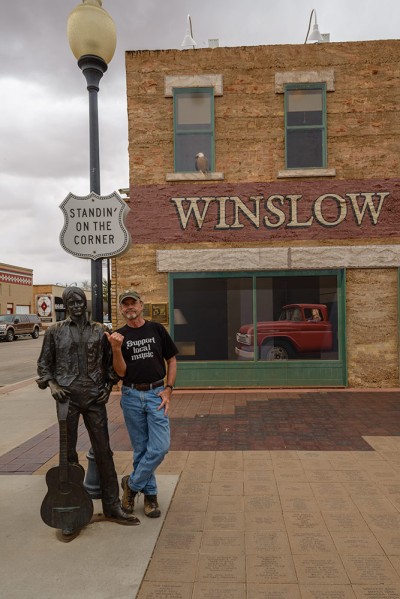
On the way home I stopped in Winslow, Arizona to pose with Jackson Browne. “Standin’ on a corner in Winslow, Arizona…”
I never did find the poppies, but all in all, it was a worthwhile trip. I managed to make some nice photographs, and to visit some old friends who live in Phoenix. On the way home, I stopped at a corner in Winslow made famous in song. The statue and “park” are the most noteworthy things I saw in the town, although friends have informed me that there is a good restaurant in one of the old hotels. Maybe I’ll check it out when I return in search of the poppies next year.
The Creative Workflow (WYSIWYG)
I am constantly on the lookout for new images. Even while I’m driving, one eye is searching for a photograph. But, to really see, it is important that I be present so I can delve into the potential image, dissect it and study the relationships between the elements. What is the best way to do this? What should I look for as I move through this process?
The first step is to ask myself: What was it that drew me to this scene? Usually it was a singular object, or a play of light over the landscape. The Soaptree Yuccas, the sidelit patterns, and the subtle light on the sand dunes at White Sands National Monument were what grabbed my attention and led to this first image. Understanding my motivation made it easier realize what I want to say with the photograph.
Next I had to frame the scene in a way that would tell the story in the best way possible. I placed the closest yucca up front, but a little off center, leaving little doubt that it was the main subject of the image. This placement also allowed me to separate it from the others in the middle ground and avoid a confusing and static composition. My choices for the exposure had to be based on the dynamic range of the scene, which, In this case, was pretty wide considering the bright highlights on the sand in the distance, and the dark tonality in the shadows near sunset.
The first technical requirement was that I capture a broad dynamic range, so I made a bracketed series of exposures that covered the entire spectrum of tonalities in the scene. Even though I didn’t need to use all the different exposures, it’s better to have them and not need them than it is to need them and…well you know. The next requirement was that the depth of field be wide enough to have sharp details front to rear. Because of the low light level at the time of day I was shooting this, the fact that I was shooting at the lowest possible ISO–to achieve the best possible image quality, and the small aperture needed to get the depth of field I required, my shutter speed was relatively slow–1/10th of a second. That meant that I needed to shoot with my camera mounted on a tripod (something I usually do anyway). It’s easy to see from this cause and effect chain how my creative workflow was based not only on composition and design elements, but also included technical considerations.
The second image of Sandhill Cranes at Bosque del Apache National Wildlife Refuge was made at twilight, that special time in the evening just after the sun set and the light is bouncing off the upper atmosphere. I was taken by the reflection of the colored sky and the reeds in the placid water of the foreground, and the transition from the smooth to the to the rough texture of the water, which created a layer-like effect because of the sudden change in color and texture. This layer is also where the action takes place: the cranes mingling, spreading their wings, foraging for dinner. There is then an abrupt transition to the golden reeds and the darker background before the final shift to the lighter tonality and magenta shades of the distant mountains and the sky.
I had my camera mounted on my tripod as usual, but I kept the bullhead swivel loose so I could easily pan to follow the movement of the birds. This image also relies on a wide depth of field to preserve sharpness in the details of all the layers mentioned above. I wanted to make the layering effect more obvious, so I boosted the saturation and contrast a little. Once again, the thought process kicks in and the decisions are made. The point of all this is to stress the importance of being involved in the making of an image. If you want a photograph to be yours, you need to put a little of yourself into it, and you need to be intentional throughout the process.
Two Birds
I killed two birds with one stone the other evening: I did some “blue hour” photography, and I made some panorama images. I have been wanting, for some time now, to get out and photograph the “blue hour”. For those of you who are unfamiliar with the term, it refers to the hour before sun-up or after sundown when the light from the setting sun is reflected in the upper atmosphere. The more common name for this time is twilight, and it is divided into three distinct phases: civil, nautical, and astronomical. The duration of twilight changes depending on the time of year, and the latitude from which it is being observed. The blue reference has to do with the color of the light which has a wonderful bluish cast to it and is diffuse without any harsh shadows. So, I finally made myself go out into the diminishing day and drive to the Rio Puerco Valley. The prospect was sweetened by the full moon which would be rising about half an hour after sunset.
I arrived at my destination two hours before moonrise and set about scouting the area for a good location to photograph the event. Since I am quite familiar with the place, it didn’t take me very long to find what I was looking for. I set up my camera on a tripod and began making test images to determine the correct exposure. As the sun went down and the light softened, I began taking several series of vertical photographs which would later be stitched together in Photoshop to create the final panorama. The first image was made about thirty minutes after sunset and about twenty minutes before moonrise.
The second photograph was actually made earlier than the first, but it was more of a test to get the feel for shooting the panorama and I didn’t expect to take it any further. After all, it’s full of cattle, which I consider to be a blight on the landscape. But, in the spirit of expanding my horizons (thank you Robin), I processed the image and, as it turned out, I liked it.
From the information I had gathered from The Photographer’s Ephemeris, I expected the full moon to rise somewhere between Cabezon Peak (the volcanic plug in the distance) and Cerro Cuate (the more prominent double peaked mount). But as the horizon began to brighten I was somewhat dismayed to discover that the moon was not where it was supposed to be…well at least not where I expected it to be. I checked the app on my iPhone again and saw that my expectations were based on a location that was actually a couple miles east of where I was.
I had planned to include the moon with the two mountains in the composition; that wasn’t possible from the place where I was standing. Now I had to re-think my plans, knowing that my window of opportunity was small if I was going to capture the moon close to the horizon. I quickly packed everything into my car and drove to the new location, walked to a place which afforded a clear view of the scene, set up, and composed the last image. By now it was dark, I was shooting thirty second exposures, and I was having to focus manually–auto focus doesn’t work very well in the dark. This being my first attempt at photographing at this time of day, and making panoramas, I wasn’t really very hopeful about the outcome. As full dark descended, I pack up my gear by the light of my headlamp and headed home.
The next morning I set about uploading and processing my previous night’s work. Each panorama is composed of nine vertical images which are then stitched together in Photoshop. As the first panorama was rendered I knew I was hooked. Somehow, despite the comedy of errors I had experienced while making the images, I managed to walk away with some finished photographs that I was happy with. It’s always an exhilarating feeling to discover a new technique and this was no exception. I made a few mistakes; there are some things I will do differently in the future, but overall, I’m happy with the way things turned out. It was a good night’s work.
Bosque Annual
This is actually old news; the images in this post were made in November. Other things have come and intervened and gone, so I am catching up with the past. One thing about photographing at Bosque del Apache: you never know what you’ll come away with.
Last year (2012) it was cold at sunrise; it took nearly four hours for all the birds to leave the pond. This year was different, with the temperatures barely below freezing, they were off the pond in less than two hours. So, things were happening pretty fast. These two sandhill cranes are in the process of taking off from the Chupadera Pond.
On the first evening, we photographed the fly in from the Flight Deck Pond. While we were waiting for the birds to arrive, I noticed these trees near the pond being lit by the setting sun. The water was still and smooth as glass. Another rorschach image.
I am a creature of habit I suppose. I have a routine that I follow while at the Bosque. When the morning fly out is over, I take a leisurely drive around both tour loops just to see what I can see. It’s on this drive that I usually find the herons, and this year I was not disappointed. I made this image of one catching his morning meal in the diversion channel on the west side of the refuge.
After crossing to the east side at the southern end of the loop, we came across this idyllic scene. The San Mateo Mountains provided just the right background the heron in the foreground was an added bonus.
These final images pretty much sum up the reasons I make my annual sojourn to Bosque del Apache: sandhill cranes and great blue herons.
They live in the wild, but at places like the Bosque where they are protected, we can rub elbows with them and catch a glimpse into their lives. I can’t imagine a life without a connection to such untamed beauty.
Black and White (Sands)
White Sands is an incredibly beautiful place. I don’t go there as often as I should; it’s only about a four-hour drive from my door. Every time I do go, I wonder why it’s been so long since my last trip. Of course, for me the attraction is the photography.
The stark landscape provides the perfect ingredients for great black and white images. Each of these photographs was made on the edge of light. The sun was low above the San Andres Mountains to the west.
Simplicity is the key; images that can be reduced to basic compositional elements are the ones that work best in monochrome. They can stand well on their own without the need for color. Don’t get me wrong I love making color photographs; I will continue to do so, but right now, I am re-discovering the power of the black and white image.
These three started as color versions because they were captured in RAW format. I followed my normal workflow, making global post processing adjustments in Adobe Lightroom and then moved them to Photoshop for the fine tweaks. The last step, the black and white conversions, were done in Silver Efex Pro.
I am pleased with the unexpected turn my photography has taken. As I mentioned in a previous post, I started out as a black and white photographer back in the day of chemicals, enlargers, and safelights. I feel like my work has come full circle.
White Sands
White Sands National Monument in south–central New Mexico is unique in many ways, but, by far, the most striking difference from the surrounding landscape is the sand from which the monument gets its name. It is actually gypsum that has washed down from the nearby San Andres Mountains. The gypsum, mixed with water flows on to a large playa (seasonal lake). As the water evaporates, the gypsum sand is left behind, and is then carried by the wind to become part of the dune field.
The White Sands dune field covers approximately 275 square miles of New Mexico’s Tularosa Basin. A little over half of it is part of White Sands Missle Range; the remainder (approx. 115 square miles) comprises the monument. It is an amazing place where the vegetation, and the wildlife cling to life by the most tenuous of threads.
In the summer, daytime temperatures can reach over 100° F., and in the winter, they can plunge to below freezing. If you plan to visit, be sure to come prepared for any kind of weather, and carry plenty of water.
No matter what time of year you visit White Sands, you will be treated to an amazing landscape, and the opportunity to find solitude in the dunes.
Yucca Sunset
Sunset at White Sands National Monument. A lone yucca silhouetted against the darkening sky with the San Andres Mountains in the background. This is the last image I made on my last trip to White Sands. Soon afterward, the light was gone, and I began the walk back to my car.
The white sand that makes up the dunes is actually gypsum crystals that are left when gypsum is eroded from the nearby San Andres Mountains. Over millions of years the dunes have grown into a moving ecosystem–the more active dunes can advance more than 30 feet per year! Plant and animal life must be able to adapt to this movement or perish.
Equipment: Nikon D200, Nikon 17–35 mm f 2.8 zoom lens, Bogen tripod.
Camera Settings: f 20, 1/25th sec., ISO 250
Processing: Contrast, clarity, vibrance, and saturation adjustments in Adobe Lightroom, curves adjustment, and RAW conversion in Photoshop.
Flight
Flight
I recently decided to go through my archives to see if I could find any images I had missed that might be worth printing. I don’t know why I passed this one up in the initial edit, but I’m glad I went back for another look; this is not the first time I have found a gem amongst the chaff of forgotten (digital) negatives. This photo was made two years ago; there are close to four hundred images in that folder, so maybe I was slightly delirious the first time I saw it.
I made eight exposures of these two cranes silhouetted against the evening sky, and this is the one where it all came together. Except for the lead bird’s beak, open in a raucous cry celebrating…the joy of flight?, or maybe just a full belly after feeding all day in the farm fields at the north end of the refuge; they are frozen, almost perfectly synchronous, in their return to their watery roost. Peter Matthiessen was right when he referred to cranes as the “Birds of Heaven”.
Equipment: Nikon D200, Nikon 300 mm f 4 lens.
Settings: ISO 320, f 9 @ 1/400 sec.
Processing: Contrast, clarity, and vibrance adjustments in Lightroom, curves and saturation adjustments in Photoshop.
Cranes
Cranes
Cranes are perennially monogamous, meaning that they keep the same mate for their entire lives. I caught this pair in a tender moment as the sun was setting at Bosque del Apache NWR last year.
A year later, and, once again, I am preparing to make my annual journey to the Bosque. In doing so, I find myself wondering if this pair will be there, or if they might have met some terrible fate during their migration, or even worse perhaps, if only one of them has survived. I recently watched a documentary movie titled “Winged Migration”. It is a beautifully photographed movie about migrating birds, and I highly recommend it to anyone who would like to know more about these wonderful creatures. But, I digress!
Equipment: Nikon D200, Nikon 300 mm f 4 lens
Processing: Contrast, vibrance, clarity, and saturation adjustments in Lightroom, curves adjustment in Photoshop
White Sands Sunset

White Sands Sunset
This is the last image I made at White Sands on my last trip. The sun was barely above the horizon, and the soft golden light enveloped me in a wave of anticipation. The low angle of the setting sun gave the ripples on the dune a palpable texture.
I think this image does a good job of communicating the fickle nature of the dunes, and the uncertain fate of the life that exists there. One yucca is partially covered by the advancing dune, and another is completely buried except for the dead stalk of it’s blossoms. The exaggerated ripples across the face of the sand suggests the constant movement that is the essence of the dunes.
Breaking Dune

Breaking Dune
This photo was made on my last trip to White Sands in May. I arrived about two hours before sunset, and was disappointed; I had thought I would find flowering yuccas everywhere, but found mostly dead stalks from last year’s blossoms.
As the sun sank lower in the sky, the side lighting began to bring out the texture and ripples on the dunes. I was driving along not far from the entrance when I spotted this dune. The wind was lifting sand from the crest, and the lighting was perfect, so I parked and grabbed my camera and tripod. I culled this image from about twenty exposures I made, and made curves, vibrance, clarity, and saturation adjustments in Lightroom and Photoshop.
In all, I managed to get eight “keepers” from a little over two hours of shooting which is a pretty good haul considering the fact that I began the evening in a snit because mother nature hadn’t cooperated in meeting my expectations. Sometimes you just have to go with the flow.
Bosque Sunset

Bosque Sunset
It’s almost that time of year again. Thousands of Sandhill Cranes, Canada and Snow Geese, ducks, herons, and other assorted waterfowl will be making their annual migration to Bosque del Apache NWR. Coincidentally, thousands of non-winged visitors of the species homo sapiens will also be making their annual pilgrimage to the Bosque. They will be represented by several sub species: tourists, photographers, and bird watchers to name but a few.
I must admit that I will be among the throng. This will be my fourth year, and as the time draws near, I find myself anticipating the trip, visualizing all the photo opportunities that that will present themselves to my lens. So, just to remind myself what’s in store for me, and to show you if you’ve never made the journey, here is an image I made last year of Sandhill Cranes gathering at sunset in the lagoon.
De Na Zin Sunset

De Na Zin Sunset
This photograph was made in the De Na Zin Wilderness, which is located northeast of the Bisti Badlands in northwestern New Mexico. We had stumbled around for several hours thinking that we were in the Bisti (our actual destination) when we came upon this small hill. The sun was low, and the light was sweet. I made quite a few exposures (I love digital!). This is the one I finally settled on, but the flat, cloudless sky really bothered me, so I just let it simmer for a few days.
When I came back to try to finalize the image, I was on the verge of giving up on it when I decided to try something a little different (at least for me). I usually try to keep my photos pretty much the way I capture them with not a lot of post processing beyond a curves adjustment, and maybe tweaking the exposure and saturation a little, but with this one I decided to desaturate just the sky–I had seen this technique used by a friend of mine, Ted Greer on a photo he made at Taos Pueblo with pretty impressive results–and I like the resulting image much better.


